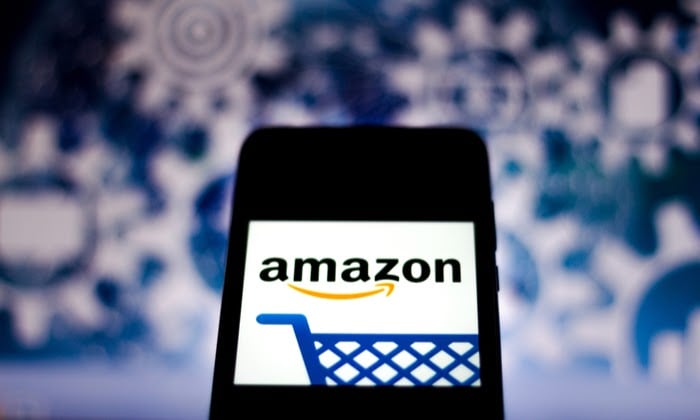
Amazon is the king of e-commerce.
It’s the largest online retailer in the world selling over 12 million items and is one of the most trusted e-commerce sites.
With 197 million people logging on to shop every single month, how can you direct some of that traffic to your Amazon store?
Amazon Ads.
A solid advertising strategy can help you increase sales as competition on the platform heats up, even if you don’t have a massive budget.
While most shops start with the basics, using advanced tactics will get you better results, faster.
We’re going to dive into the eight advanced Amazon ad tactics you can add to your repertoire to boost your ad spend ROI, brand awareness, and ultimately bring in more sales on autopilot.
1. Use Long-Tail Advanced Amazon Keywords to Find Users With Strong Purchase Intent
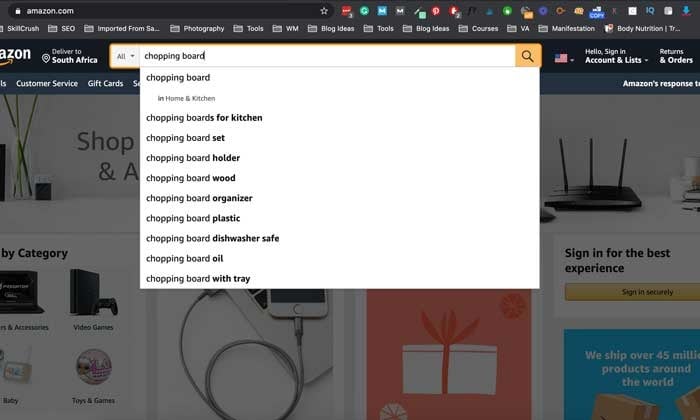
Keyword research is the secret sauce of any advanced Amazon ad strategy.
It’s going to get your products in front of right users who are ready to make a purchase, but you can’t go after any word or phrase. You need to make sure it’s a long-tail keyword.
Why?
Because buyers who search for something specific like “wooden chopping board with compartments” are far more likely to make a purchase than someone using a vague phrase like “chopping board.”
Another reason to niche down with your keyword research strategy is the lack of the competition. Generic phrases like “candle” are far more expensive and saturated.
As a new seller on the platform, you’ll have a hard time ranking for the term and getting buyers to click through.
By going after phrases with low competition and a high purchase intent, you can boost your brand awareness and sales and improve your Amazon SERP.
2. Use Sponsored Brands to Increase Brand Awareness
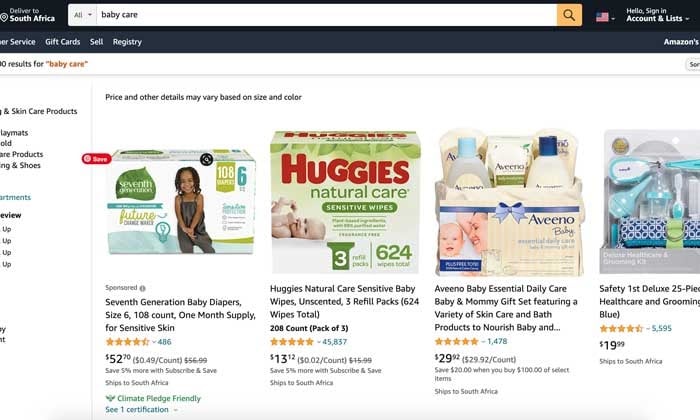
Are you not prioritizing brand awareness? You can bet your rivals on Amazon are.
In a study by Search Engine Land, ad spend allocated for building brand awareness jumped from 26% to 60% in less than 12 months.
So what’s the best way to increase your visibility and start building your top of the funnel advertising strategy?
Sponsored Brands.
The ads appear at the top of search results, and it’s one of the most useful tools for building your brand on Amazon.
Use Sponsored Brands to create brand recognition by using a custom headline, adding your logo, and sending traffic to your storefront and products listing page.
By investing in awareness, you’re helping buyers become aware of your products.
You’re showing users you have a solution to a problem in their lives. This strategy helps customers learn more about you and increase sales over time.
3. Analyze Your Product Level Profitability to Boost Your Profit Margin
Before you start experimenting with an advanced Amazon ads strategy, you need to identify which products would benefit the most from a PPC (pay-per-click advertising) boost by looking at product level profitability.
What does that mean?
Product profitability is the revenue you make from a product and the amount it costs you to make a sale.
For example, your enamel travel mugs might cost $5 to make, but it costs you $15 of ad spend to get a customer.
To find your product level profitability, analyze each product in your storefront, determine which ones have the highest profit margins, and focus your advertising spend on those items.
Once you have your list, run ad campaigns for those products.
Implementing this advanced Amazon tip will help you stop wasting dollars on low-profit or low-selling items and make more money.
4. Use the Advanced Amazon Ad Placement Report to Tweak Your Campaigns
Every successful seller on Amazon knows you can’t take a hands-off approach on the platform.
What’s successful this week won’t deliver the same results in a month from now.
You need to continually monitor, analyze, and adjust your ads to avoid losing visibility and giving your competitors an unintended advantage.
And Amazon’s placement reporting has evolved over the last couple of years.
Back in 2018, only three options were available to sellers: Other on Amazon, Remarketing off-Amazon, and Top Search on Amazon.
Today, it’s expanded to five options, which allow you to dig deep into your data and give you greater control over your campaign performance.
What is the Amazon Ad Placement Report?
The Ad Placement Report is one of the most powerful reports available to you and is a must for anyone looking for advanced Amazon selling tips.
It tells you exactly which ad placements help shoppers find your products and which campaigns need some tweaking.
For example, you might find that an ad placement in the middle of the page consumed less of your budget and had many impressions than a top-of-page one.
The report also helps you identify which keywords are performing the best. You can quickly see which search terms are giving you a greater ROI and which ones are giving you lackluster results.
5. Use Other Marketing Channels to Drive Traffic to Your Amazon Store
Don’t put all your advertising eggs in one basket.
While PPC campaigns on Amazon are a great way to build brand awareness and drive sales, you need to incorporate your other marketing channels to find buyers.
Plus, Amazon comes with built-in credibility and superior customer support. As a new brand, you can use this to your advantage by redirecting traffic to your store instead of to your website.
Using Facebook, Pinterest, Instagram, and Google Ads to feed traffic to your Amazon Product Listings strategically can generate a high ROI for your store.
Here’s what you can expect:
- Traffic from Day One
- Tapping into an extensive network where your ideal customer hangs out
- Using the shopping mentality on sites like Instagram and Pinterest to find users ready to buy
- Encouraging influencers to redirect traffic to your Amazon store by making an affiliate commission on sales
However, don’t dive into every single platform.
Do your due diligence and identify which marketing channel your target audience uses before you open your wallet.
6. Define Your Target Audience to Reduce Ad Spend and Increase Sales
Paid advertising and identifying your keywords are important for Amazon sellers.
Yet, they’re not the most critical part of your strategy.
There is something far more important you need to master: your target audience.
If you don’t know to whom you are selling, then you won’t know:
- Which keywords to target
- Which products your audience needs
- How to craft compelling ads that get clicks and conversions
Without a clear audience, none of these advanced Amazon tips will work.
Think of your target audience as the foundation of a house.
Without a solid structure, it won’t matter how many keywords you have inside. The minute a strong breeze rolls through, your house will crumble, and your keywords will become useless.
When you understand your demographics like the back of your hand, you know which words they’ll use to describe their problem.
You can figure out their online behavior and identify which social media platforms to target.
For example, if you’re targeting stay-at-home parents, running ads during the day makes more sense. However, if your customer is a full-time employee, they’ll most likely be on Amazon in the evening after work or during their lunch breaks.
When you understand these nuances and put yourself in your target audience’s shoes, it becomes ten times easier to create ad campaigns that convert.
7. Create an Enticing Advanced Amazon Landing Page That Converts
Anyone can build a landing page on Amazon, but how can you be sure it will convert?
Although there is no exact formula you can follow, there are some standard rules of thumb to increase your chances of building buyer trust and sales.
If your landing page is bland (no call-to-action, little-to-no text), you won’t capture people’s attention.
Here are a few things you can do to optimize your Amazon landing page:
- Above the Fold: This is the part of the page that is visible the moment someone clicks through. It’s one of the most important sections as you have a limited time to entice them to stay, scroll down, and learn more about your products.

- Use Scarcity Features: FOMO (the fear of missing out) is a powerful marketing tactic. It gives buyers a time limit to take advantage of a deal and can boost conversions by 33%. Add scarcity to your Amazon landing page by using a countdown timer before an offer expires.
- Always Include a Call-to-Action: Think of your CTA as the goal of your landing page. Without one, potential buyers won’t know what to do or where to click. Make sure you use a clear CTA like “Buy Now” to stop users from bouncing off your page and not converting.
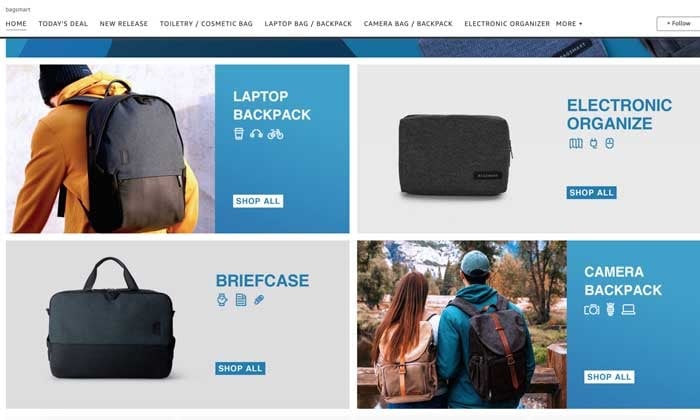
- Optimize With Your Branding: Your page on Amazon is a space to show off your brand’s personality and stand out from all the other sellers. Don’t leave your page looking like everyone else’s. Add your logo to the header, link to your website, and make it easy for users to connect with your brand. It’s an easy way to make your store memorable and build on brand awareness.
- Use Images and Video: People consume different types of content to solve a problem. Some like to read, while others prefer videos. Include a mix of different types of content on your page to appeal to different customers.
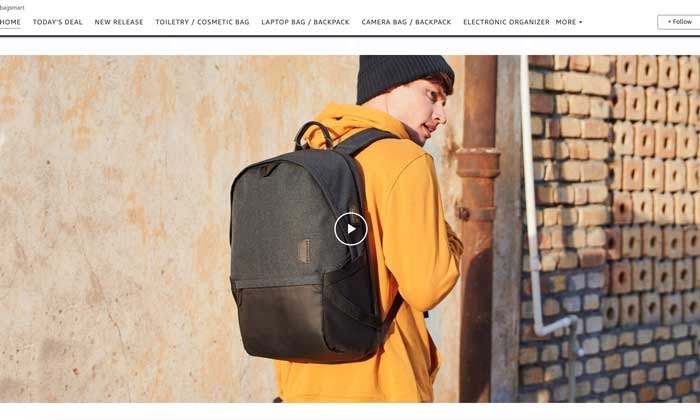
- Take Advantage of Social Proof: People are like lemmings. We prefer to buy from brands with a track record. It’s why influencer marketing has exploded in the last ten years. Use product reviews and testimonials on your landing page to show potential buyers you’re not a scam and you’re selling a quality product.
- Keep Your Design and Copy Simple: If your landing page is too busy, people will click off. Attention spans are short, and you need to make sure you’re not overloading the buyer with information. Keep your copy short and to the point. Use short sentences, break the text up with headings, and add bullet points to make your page skimmable.
8. Filter Out Negative Keywords in Your Advanced Amazon Ads
Want to cut down on wasteful ad spend? Filter out negative keywords you don’t want to rank for on the site.
A negative keyword excludes a word or a phrase that isn’t a good match for your product.
Doing so can help you save a lot of money, and not using this tactic is one of the biggest Amazon ad mistakes you can make.
For example, if you’re selling leggings, you might want to rank for keywords like:
- Leggings for women
- Leggings with pockets
- High-waisted leggings for women
But you wouldn’t want to rank for a keyword like “Lululemon leggings.”
The buyer intent is for a brand that isn’t you, and paying to rank for that phrase is going to give you low ROI.
For an advanced Amazon result, look into filtering out keywords receiving large amounts of traffic but few sales.
Not sure what keywords to add to your negative filter?
- Go to the “Customer Search Term Report”
- Select the “spend” filter
- Look for keywords bringing in little-to-no sales
- Add those phrases to your negative filter
Conclusion
By following these advanced Amazon tips, you can start selling more while spending less on ads and become a successful e-commerce business.
You can achieve this without a gigantic ad budget. You don’t need to spend hundreds of dollars to see results and start converting your impressions into paying customers.
What you need is strong keyword research and an ad strategy you’re constantly tweaking.
Remember, Amazon is not a “set it and forget it” platform.
Your winning formula is going to change continuously. You need to stay on top of your analytics to adjust your strategy and pivot before losing traction in search and seeing a drop in sales.
How are your listings performing after implementing these advanced Amazon ad tips?
The post 8 Advanced Amazon Ad Tips to Improve Your Sales appeared first on Neil Patel.
No comments:
Post a Comment